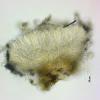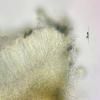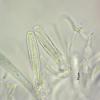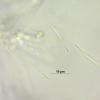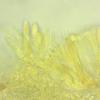
20-12-2025 23:08
Patrice TANCHAUDBonsoir, récolte sur sol sablonneux dans l'arri�

20-12-2025 15:47
Mirek GrycHi.These grew on pine wood that was heavily covere

18-12-2025 21:17
Pol DebaenstThe identification took me to Byssonectria deformi

15-12-2025 07:09
 Danny Newman
Danny Newman
indet. Rutstroemiaceae sp. on unk. fallen leavesMc

19-12-2025 10:10
Patrice TANCHAUDBonjour, récolte réalisée en milieu dunaire, a

18-12-2025 17:23
 Bruno Coué
Bruno Coué
Bonjour,je serais heureux d'avoir votre avis sur c

18-12-2025 18:07
Margot en Geert VullingsThese plumes were found on rotten wood.They strong

17-12-2025 18:35
 Michel Hairaud
Michel Hairaud
Bonjour à tous/Hi to everyone I am passing along
Nouvelle récolte alpine, trouvé sur branches d'Alnus viridis (aulnaie verte à 1'938m), apothécies 0.1 - 0.2 mm, à hyménium blanc, surface externe couverte de petits poils en crochet, renflés à la base, asques à crochets 33 - 38 x 5 - 6 µm, octosporés, IKI-, spores 19 - 27 x 1.25 - 1.5 µm, paraphyses filiformes.
Merci d'avance pour vos avis.
Elisabeth

this is exciting since I just got a sequence from Francois Valade of a fungus that I would say is the same. But it was on Adenostyles stems in French Alpes, 1800 m, and with the ITS I cannot say where it might belong. Mollisina and Phialina come with great distance. For Unguiculella no sequences exist at all, and I am unaware of a species with such spores.
Zotto


Hyalacrotes I know with glassy and hooked paraphysis tips similar to the hairs. And I see in Raitviir 2004 that all of his have this character.
The hairs here in Elisabeth's fungus are not glassy at all but typical Unguiculella.
A sequence of U. eurotioides or another species would be urgent.
Zotto


I recall that hyalacrotes has solid material on the hairs without lumen, and the material disappears in KOH. Here I see a firm but thin wall with a maybe higher refraction index than usual. No, I did not see acute paraphyses, but that feature happens in some of the Ungiculella species.
Zotto

just a question: why not a Hamatocanthoscypha?
Best, Lothar

this is a matter of hair shape. In contrast to Hamatocanthoscypha the hairs have a more glassy wall, and they are often +/- geniculate at the junction of inflated base and narrow part. Besides, as Stip said, the paraphyses are actually hooked and also a bit warted like the hairs. Also the inamyloid asci are frequent in Unguiculella. DNA exists for H. laricionis and I could not recognize a relationship to that.
Zotto

thank you a lot, Zotto!
Best regards, Lothar

that would be great! I will write you in private.


it is a bit old but perhaps worth a try. Mine are also that old.
Zotto




